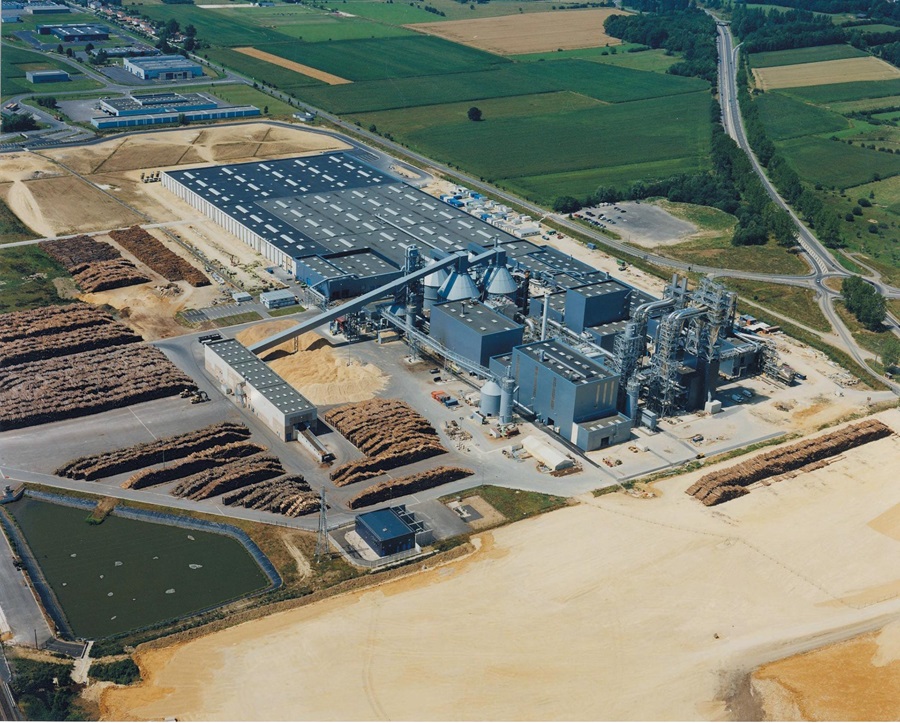
World first: a second life for MDF and HDF panels with our brand new recycling technology
18/10/2021
For decades, we have been committed to keeping wood in circulation for as long as possible. For some time, our high-quality products have only been made with reclaimed wood, and our chipboard panels have been composed of 90% recycled materials. With our own new innovative recycling technology, we are taking things a step further to become the first in the world to recover MDF and HDF for new panels.
A new life for wood
MDF (Medium Density Fibreboard) and HDF (High Density Fibreboard) form the basis of our panels. We only use reclaimed wood to produce them. This is wood we save from being burnt by including it in our panel materials. Therefore we prevent new trees from being felled and CO2 from entering our atmosphere.
For many years, we have been on the lookout for a way to take things a step further and give our wood fibre panels a new life at the end of their lifecycle. Today, after a lot of research and development, we have become the first in the world to succeed in this endeavour. Thanks to new recycling technology we can now process wood fibre from discarded MDF and HDF into new panels on an industrial scale.
On the trail of our chipboard
Recycling is nothing new to us. On the contrary, in fact. Unilin Panels was set up in the 1960s to give loam – a by-product of the flax industry – a useful purpose instead of burning it. That was how the idea came about of investing in panels based on this loam: flaxboard panels. Today, our chipboard panels are composed of more than 90% recycled materials and now, following years of developing the process, we are able to successfully recycle MDF and HDF panels.Revolutionary recycling technology
With our innovative new procedure we can recycle wood fibres with glue residue and re-use them to make new materials, such as our decorative coloured MDF panels or the HDF panels used as the basis for the laminate made by our sister company Quick-Step. Thanks to this revolutionary development, we have doubled the lifecycle of wood fibres, giving new trees a chance to grow and in turn protecting nature by storing CO2.
From kitchen to factory
It was our President Veronique Hoflack – at the time still General Manager of MDF/HDF – who came up with the idea some years ago: “I got the inspiration when I was standing in my kitchen. You can compare how our new technology works with a pressure cooker. We humidify the MDF panels with steam, heating them and putting them under very high pressure. Then, we reduce the pressure, which loosens the fibres. I tested out my idea at home first. When it looked as though it could work, I passed it on to our R&D department to work on. They then developed and refined the technology.”
“By 2030, we want to replace at least 25% of our raw materials mix at a group level with recycled fibres, thereby keeping 380,000 tonnes of CO2 per year in our materials”.
Towards 25% in 2030
In the first phase, we will use our new technology for recycling materials produced internally in our production plant in Bazeilles (France), where we have been investing in state-of-the-art technology for the production of MDF and HDF panels for many years now. Later, we will ramp up the capacity so we can also recycle fibre panels collected externally.
Our ambition is to replace at least 25% of our raw materials mix at a group level with recycled fibres by 2030. That way, we can keep as much as 380,000 tonnes of CO2 in the wood fibres we give a new life to with our technology.
The missing link in the sustainability chain
Wood that we really can no longer reclaim in our materials is used as a source of energy for our production. In combination with using as much reclaimed wood as possible and our new recycling technology, we process wood in the most efficient and sustainable way at every point in the chain.
The development of this ground-breaking new recycling technology also completely aligns with our sustainability strategy and that of our parent company Unilin Group. We are doing everything we can to contribute to the goals of the Paris Agreement, in order to limit global warming to 1.5°C. That's why, in the coming years, we will continue to invest in research and development.
Want to find out more about our sustainability efforts?
Read all about it and join the circle!









